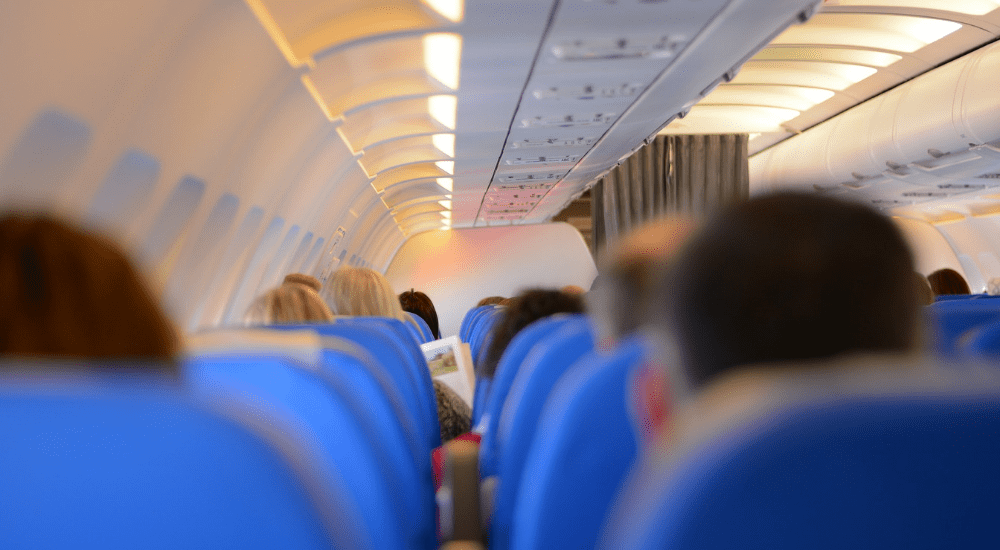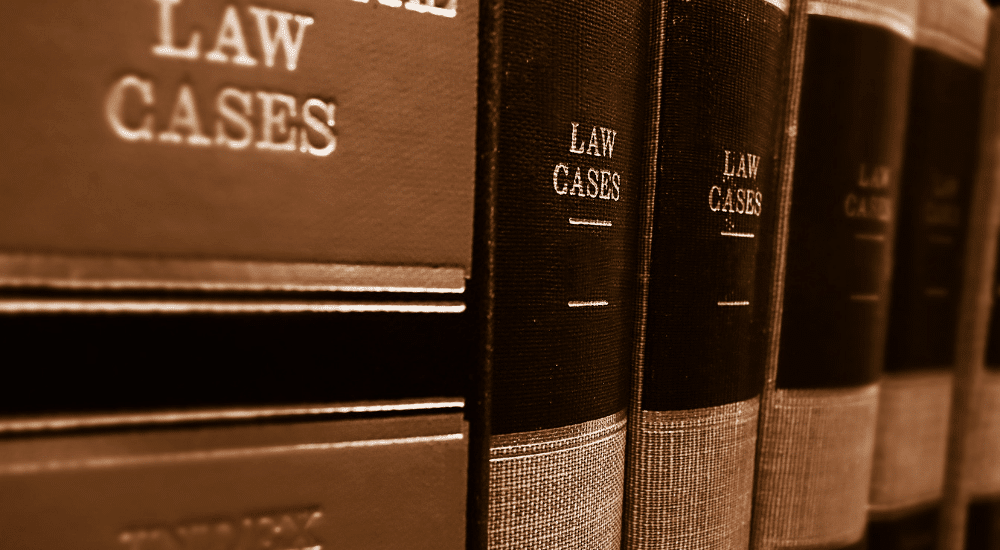Causes of Plane Crashes: What to do After an Accident
Whether it’s traveling for work or going on vacation, many people reach their destinations on an airplane. If you or a loved one has been involved in an accident while flying, you may want to learn more about the causes of plane crashes and who is at fault. These tragedies can occur for a variety of reasons, including pilot error, mechanical defects, poor weather, and air traffic controller error. Often a number of factors are at play, and even poor runway maintenance and birds flying into the plane’s engines can be to blame.
When airplane crashes do occur, they often have extensive and devastating consequences. Crashes involving larger commercial airplanes, while rare, can cause shockingly high numbers of injuries, and even fatalities. While there are many reasons planes crash, pilot error is the most common. More specifically, aerodynamic stalls that lead to in-flight loss of control are most often linked to these incidents, with studies showing one of these accidents happening about once every six days.
So, what can plane crash victims and their families do when their lives have been impacted—many times, gravely—by a devastating accident? The first thing you can do is better understand why planes crash, what your rights are in the event of an accident, and how to pursue legal action after your life, or the life of a loved one, has been forever altered by an airplane crash. Your next step is then to seek out an attorney with extensive experience in aviation lawsuits to help you determine the best path forward.
Common Causes of Plane Crash Injuries
Most plane crash injuries are the result of not just one single cause, but several contributing factors working in concert. The Federal Aviation Agency (FAA) has conducted ongoing research showing the most common cause of plane crash injuries is flight crew error, specifically the loss of control by the pilot during a flight. That said, errors made by the pilot or other members of the crew are often made in response to other factors at play.
For example, there are myriad ways an airplane might malfunction, such as unexpected engine failure, a sudden spin, or a precipitous loss of altitude or fuel. Whatever the initial issue might be, it is critical that the pilot and crew members respond quickly and in exactly the right way to avoid an aircraft accident due to human error.
Unfortunately, the pressure to make a quick decision can lead to misjudging the crisis or making the wrong choice in the moment. This, in turn, can result in passengers and crew members aboard the plane being injured—sometimes seriously—in a crash. It is also possible that the pilot and other crew members do everything right when responding to a malfunction or other unexpected occurrence, yet they simply don’t have enough altitude, fuel, engine power, or time to avoid an accident.
Aside from crew error, there are many other common causes of plane crash injuries, such as defective equipment, faulty design, air traffic controller errors, fueling errors, or improper aircraft maintenance or inspections. Many crashes happen around takeoff and landing, while others occur mid-flight. Some of these tragedies are due to inclement weather, while others are caused by limited visibility when flying over rough terrain.
Regardless of the type of aviation accident, the kinds of injuries caused by a plane crash are often severe, if not fatal. The most common plane crash injuries include:
- Broken bones: It is extremely common for passengers and crew members to sustain broken bones in a crash. Falling from a great height through the air to the earth is almost certain to cause multiple fractures for anyone on board.
- Spinal cord injuries: Many plane crash victims suffer from spinal cord injuries, which can cause partial or complete paralysis that is sometimes temporary, but often permanent.
- Burns: These are common injuries in plane crashes, since airplane fuel is combustible and fires can also result from electrical malfunctions or friction. Even people who weren’t passengers on the plane but were simply near the accident on the ground can sustain burn injuries from the crash.
- Traumatic brain injuries: Passengers and crew members on airplanes do not typically wear protective headgear in case of a crash, so when a crash does occur, surviving victims can sustain traumatic brain injuries resulting from blows to the head. These injuries can forever affect their ability to work, communicate, make sound decisions, and generally experience the same quality of life as before the incident.
Of course, the most severe and traumatic consequence of plane crash injuries is death. For the loved ones of plane crash victims who lost their lives in the accident, the emotional pain of their loss can be both devastating and ongoing.
Private Plane Crashes: Are Smaller Planes Safer?
Commercial airliners are designed to hold hundreds of passengers and crew members, so when they crash, hundreds of people can be injured or killed at once. The single deadliest commercial airplane crash killed 520 crew members and passengers in 1985 when an airplane operated by Japan Air crashed into a mountain in Japan. Private plane crashes, by contrast, may not injure or kill as many people in a single accident, since these smaller aircraft aren’t designed to hold nearly as many passengers—yet they are statistically more dangerous than larger airliners and more likely to be involved in a crash.
Some crash statistics even suggest that private planes are nearly as dangerous as cars. At first glance, this may seem off-base: Tens of thousands of people die each year in car accidents, while far fewer than that—generally between 500 and 1,000 people total—die each year in airplane crashes (including general aviation aircraft like private jets and small planes, but excluding balloons, helicopters, and combat aircraft). In 2017, fewer than 400 people died in private planes. However, airplane crash statistics are measured per hours flown, while traffic accidents are measured per vehicle miles traveled, it’s an apples-to-oranges comparison. When these variables are adjusted to make a better comparison, some say that private plane crashes occur nearly as often as car accidents, if not as often or even more so. Whatever the number of serious injuries or deaths in these accidents, lives can be forever changed and families are often left devastated in the aftermath. Anguish and grief can be compounded when a crash was avoidable.
However one might choose to translate the statistics, private planes are most certainly more dangerous than commercial airliners, because these types of aircraft lack the safety features and backup systems of larger planes. Private planes also have less stringent requirements for pilots, including training hours logged.
If you have sustained life-altering injuries in a plane crash, or if you have lost a family member, you may be considering legal avenues to receive compensation for what can be significant losses.
Can You Sue an Airline if Your Plane Crashes?
This is a common question after one of these tragedies, because state and federal regulations govern major airline carriers as well as general aviation aircraft. This means that government agencies will be involved in most plane crash investigations, and there are specific rules regarding plane crash liability and personal injury lawsuits, as well as regarding the rights of the victims involved.
Plane crash victims and their families do have legal protections immediately following an accident. Per the Aviation Disaster Family Assistance Act of 1996, for example, both the NTSB and the airline that owns the aircraft that crashed are responsible for ensuring that victims and their families receive certain services and supports, including assistance with traveling to be with their loved one and compensation for their room and board during their stay.
Passengers on international flights have certain extra rights in the event of a crash thanks to the Montreal Convention, which stipulates that airlines that are found to be at fault after a crash must provide each passenger with special drawing rights. The value of drawing rights is set by the International Monetary Fund and can change, but it is generally equal to around $170,000 per passenger in the United States.
Unless the airline can prove its pilot and crew members took every necessary and possible precaution to avoid the accident, there is currently no limit to what airplane crash victims can recover from the airline. And while the airline can be found liable, victims can also sometimes sue other liable parties, such as the airplane manufacturer or the manufacturer of one or more of its parts.
Suing an airline following a crash is a complicated process. If many parties are involved, such as in the case of a commercial airplane crash, the case might become a multi-district litigation. By contrast, victims affected by a smaller plane crash might be barred from filing a lawsuit against the plane manufacturer if the plane seated fewer than 20 passengers and was in service for at least 18 years. These are just two examples of numerous potential circumstances that can make a plane crash lawsuit more complicated than other types of claims.
Wondering How to Sue an Airline?
After a crash, the circumstances surrounding the accident must be investigated in order to establish cause and liability. The FAA and NTSB are likely to be involved in the initial investigation. Attorneys representing crash victims or their families might also hire independent investigators to help establish cause and determine liability. If you or a loved one has been involved in a plane crash and you are wondering how to sue an airline, it is essential to contact an experienced attorney that specializes in aviation law as soon as possible after the crash.
Time is of the essence for a variety of reasons. The more time that passes after a plane crash, the less reliable witness accounts become. Furthermore, pursuing legal action after a plane crash is a complex process that can take months or years to complete. This is why aviation accident lawsuits are best handled by highly specialized professionals with in-depth knowledge of these complicated cases.
People who have been injured in a plane crash or who lost a loved one in an aviation accident can experience an ongoing loss of quality of life that deeply affects them. They are likely to have mounting rehabilitation, physical therapy, and medical bills, and might be temporarily or even permanently unable to work as a result of the crash. The emotional pain and suffering caused by a plane crash can also lead to lasting issues that can allow a person to seek compensation for emotional distress.
Slack Davis Sanger Has the Expertise Needed for Aviation Cases
An experienced and compassionate attorney with extensive knowledge of the extremely complex body of aviation regulations can not only advise you about your case, but will also deal with governmental and insurance agencies and manage all related administrative aspects of your lawsuit. The aviation accident attorneys at Slack Davis Sanger are authorities in aviation lawsuits, and we have a long history of success in securing the compensation our clients deserve in these tragic situations. We have licensed pilots on our team who understand the complexities of airplanes, pilot error, and manufacturer error who and can fight for your rights or those of a loved one as a victim of a plane crash.

The firm handles cases involving catastrophic personal injuries and deaths. Our work spans three decades of handling airplane and helicopter crashes, truck and car accidents, oilfield and construction accidents, and other devastating accidents. We try lawsuits throughout the country in both federal and state courts and have recovered hundreds of millions of dollars for our clients. To date, we have handled or tried cases in 47 states, read more about our attorneys and firm.




